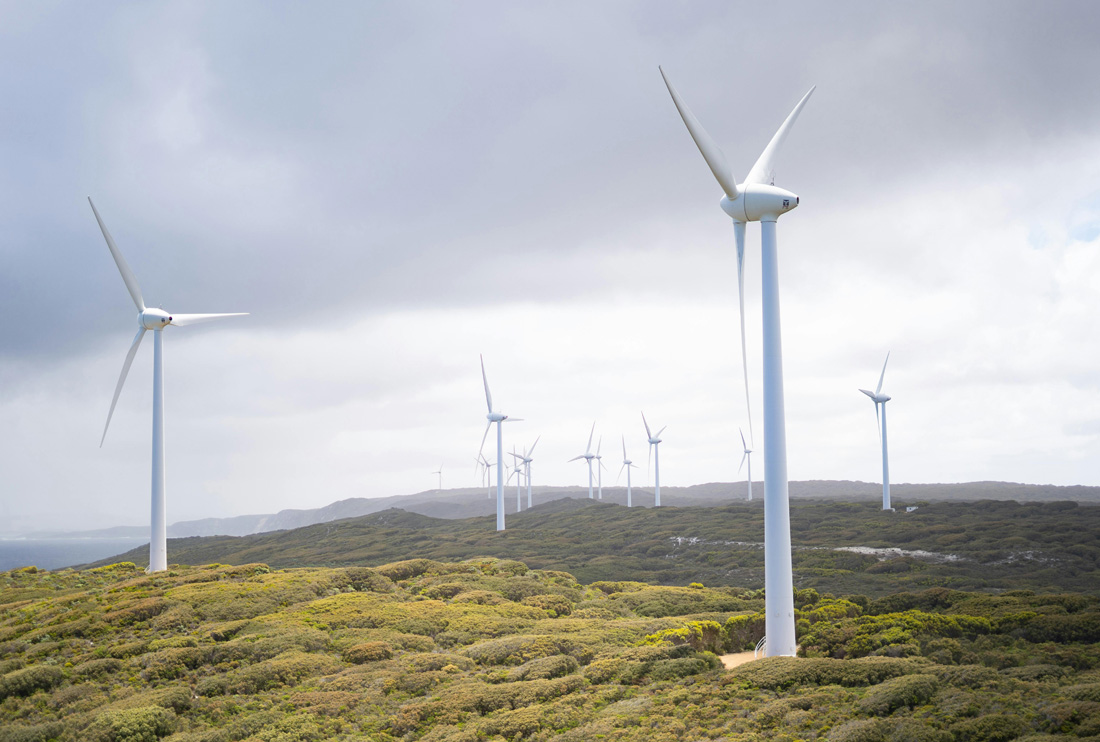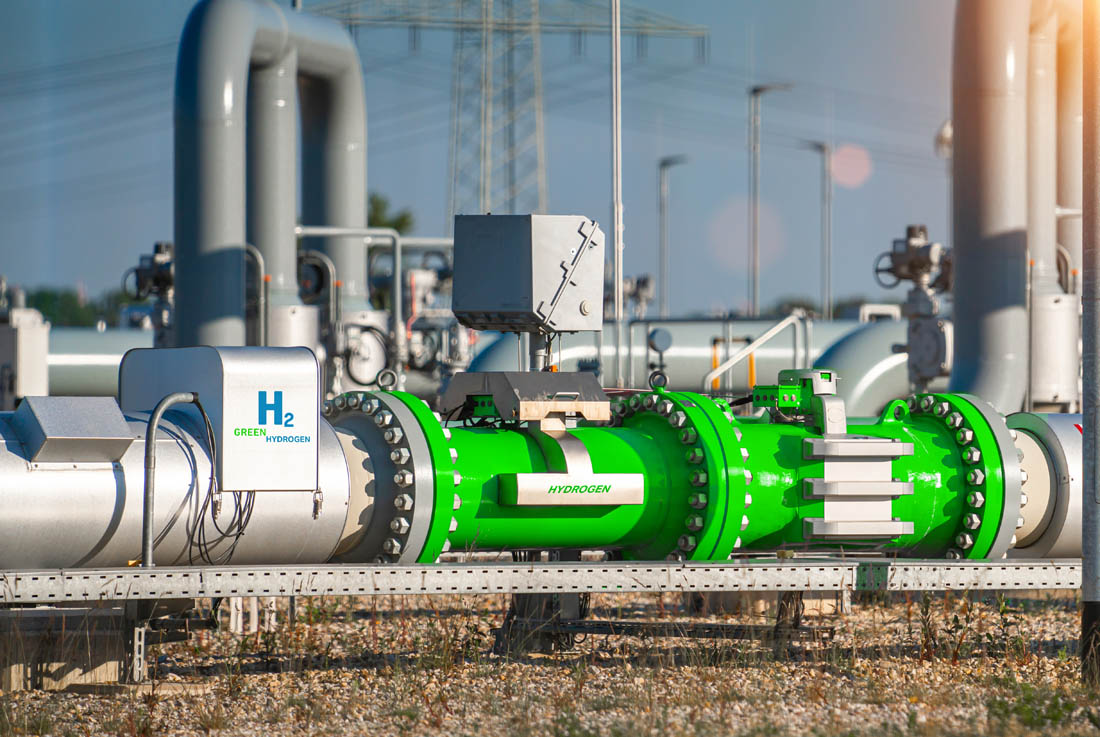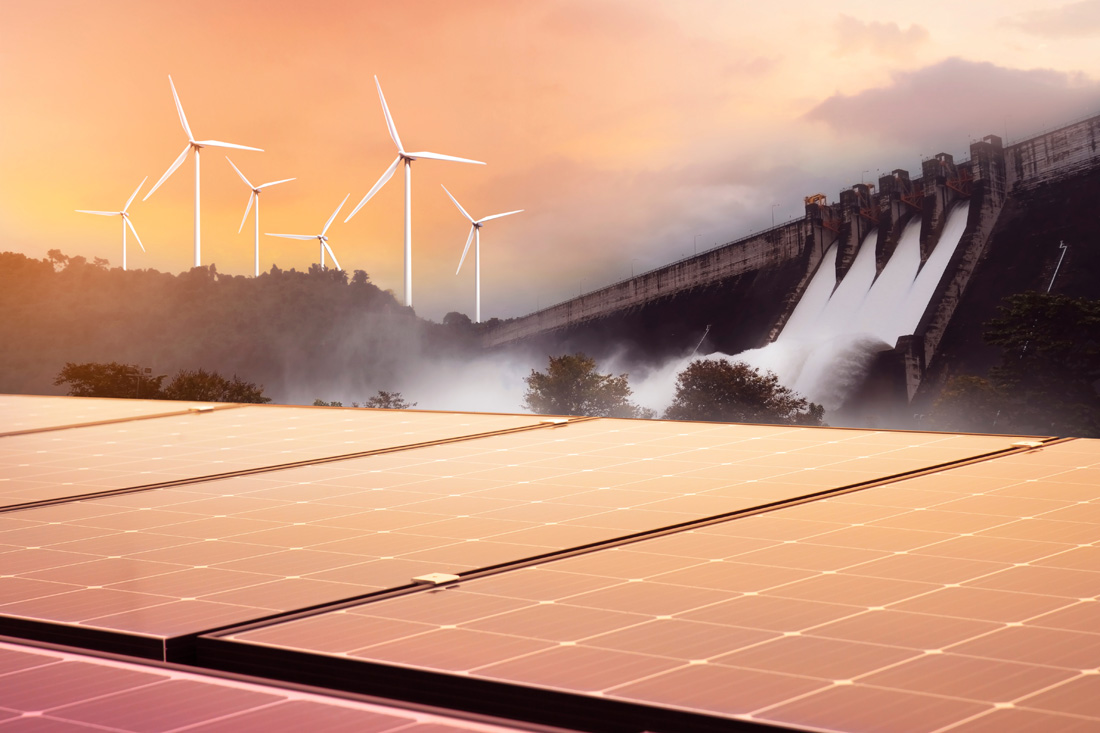strong>The Energy Report: The April issue of your newsletter, GreenTech Opportunities, says that while the broader markets have rebounded, the green energy sector's performance over the past year has been muted. What are some signs that renewable energy is now a legitimate investment sector?
Peter Cox: One, wind is now the number one source of new electricity-generation installations in both Europe and the U.S. and has been for the last year or two. That's including coal, natural gas and so on. The second is that wind energy is now so cheap that residential customers in Germany and Texas are receiving rebates on their utility bills because such a large proportion of their power is coming from wind.
TER: How is wind energy faring in relation to other energy sources?
PC: Wind is the one renewable energy source that, currently, is competing directly with coal and natural gas for electricity from new power installations. Wind and natural gas combined accounted for about 80% of new capacity added to the U.S. electrical grid.
TER: Does that mean the best opportunities for investing in renewable energy are in wind?
PC: The problem with wind energy in the U.S. now is that you have a tax credit, which is renewed every couple of years, but developers aren't able to plan three, four or five years in advance because they don't know if that 1.5 cent-per-kilowatt-hour tax credit is going to be renewed. If you look at U.S. wind installations in the last few years, there are these huge booms and then these crazy busts where you're installing 4,000 megawatts (MW) at one point and less than 500MW a few quarters later. The U.S. government lacks a long-term policy supporting wind energy in terms of small direct subsidies and integrating wind into the grid. Due to the current confusion, U.S. wind power installations for 2010 look to be less than the 10,000 MW installed last year.
TER: If the "green" energy sector needs subsidies to exist, how viable is it?
PC: Let's start with a bit of history. The first treasury secretary of the U.S., Alexander Hamilton, wrote about the importance of supporting nascent industries. That holds true today. These new sources of energy are competing with energy sources that have been around for 120 years. These are economically and politically entrenched industries. The traditional energy sources still receive large subsidies. According to the White House's Office of Management and Budget, the U.S. could save up to $36 billion between now and 2020 by reducing subsidies to oil and gas. Between 2002 and 2008, the U.S. coal industry received about $17 billion in subsidies. Wind, solar and geothermal are not competing on a level playing field. As long as you have the traditional sources of energy receiving vast subsidies, it's difficult to make the point that wind, solar and geothermal shouldn't receive subsidies as well.
TER: Tell us about some changes in the renewable energy sector during the last few decades.
PC: In the last 30 years, thanks to support in Europe and a huge buildout of these technologies, we've seen costs drop dramatically. In the early 1980s, wind cost about $0.30 per kilowatt hour. With good location and current technology, we can now get to about $0.07 per kilowatt hour. Solar power in the early 1980s cost $2 to $3 per kilowatt hour. In parts of Arizona, California and the sunniest parts of Spain, solar from photovoltaics (PV) can now cost $0.18 per kilowatt hour. The drop in costs is only going to continue as far as we can see. And those figures are unsubsidized—that is the pure cost of that electricity. I think that is a very strong argument to become interested in these industries because they are already at the point, or very close to the point, of being competitive with traditional sources of energy. To put those figures in perspective, residential electricity rates in California average $0.16–$0.18 per kilowatt hour. Average electricity rates in Europe are even higher, in the $0.20–$0.25 range.
TER: With subsidies, could renewable energy be even cheaper than existing sources?
PC: Yes, perhaps in the longer term. We're already at the point where wind is cheaper than coal and natural gas, as consumers in Germany and Texas are finding out thanks to their rebates. In the early to middle part of this decade, we will see solar become very competitive in a significant portion of the U.S. grid. The same goes for Europe.
TER: Is that due to advances in technology?
PC: The efficiency of solar cells has gone up 1% or 0.5% each year. Real world efficiencies for the highest-quality mono-crystalline solar PV modules are now around 18.5%. The price of the polysilicon—the main ingredient in most solar PV panels—went from about $350 per kilogram (kg) in 2008 to about $50/kg last year. There's a huge oversupply of polysilicon. And manufacturing advances have continued.
TER: Your newsletter said that Chinese solar panel manufacturers are even looking to build plants in the U.S. and Ontario.
PC: Part of that is because you have states and Canadian provinces with solar PV support programs that require a certain portion of solar PV panels to be manufactured in the U.S. More and more solar companies are looking at previous manufacturing hubs like Michigan to retool factories for these new forms of energy. At the same time, Linamar Corporation (TSX:LNR), an auto parts manufacturer in Canada, sees a $4 billion annual market for manufacturing wind turbine components and replacement parts. It's already being done in Europe because of the huge market that's been established there. The U.S. wind industry installed about 10,000 MW of new generating capacity last year. When it comes to solar and geothermal, the growth is there but their overall contribution to energy supply isn't huge. However, four gigawatts (4 GW) of solar PV were installed in Germany in 2009. As this growth continues, traditional manufacturing hubs may well see new companies refurbishing old factories.
TER: You talked before about subsidies for renewable energy, which was a significant part of President Obama's election platform. What's the likelihood that the energy bill gets passed?
PC: Obama has said, just like he did with the healthcare bill, that this is one of the key points of his mandate. I believe in some form or another it will get passed. How will it affect the green sector? There will be some form of a cap-and-trade program initiated. This will put a price on the carbon dioxide (C02) emitted by coal and natural gas energy utilities, allowing renewable energy developers a certain confidence when it comes to selling energy from a wind farm or solar farm to PG&E (Pacific Gas and Electric Co.) or SCE (Southern California Edison) or any of the other large utilities.
TER: How will consumers benefit?
PC: The energy bill in the U.S. would ensure that two-thirds of carbon-credit revenue would go back into the pocket of the consumer. Coal and natural gas would become somewhat more expensive as users start paying for the C02 that they emit with municipal utilities and so on. However, as wind will likely play the largest role in new renewable-electricity installations across the country, there is a good chance that consumers in other parts of the U.S. will enjoy the same rebates as their fellow citizens in Texas.
TER: Give us an overview of how this cap-and-trade system would work.
PC: The U.S. already has a functional cap-and-trade system in the Regional Greenhouse Gas Initiative (RGGI)—North America's first and only functional cap-and-trade program. It starts with the utilities. They get a carbon emissions cap placed on their power plants. If you go above this limit, you have to buy some extra credits on this trading platform. If, through energy efficiency advances or if, for example, you shut down a coal power plant and move your production over to something renewable, then you can actually sell these credits. That is, if you are under your annual cap.
TER: The energy bill would essentially take the RGGI model and make it national?
PC: Yes, but there would probably be some changes. The RGGI has an open auction so the companies compete with themselves at the beginning when the credits are given out, so the value of those CO2 credits is higher. In Europe, the credits are just handed out to the power plant operators (in the form of gifts). It undermines the program. We have yet to find out exactly what form the national program would take. The most-effective approach would mirror what you have in the RGGI.
TER: Wouldn't that form of auctioning credits allow larger, more-profitable carbon polluters to buy the credits at the expense of smaller, potentially more efficient but not as profitable, companies? Wouldn't you see some companies going out of business because they have no carbon tax credits?
PC: The first part of the program would be to put a cap on the level of emissions per operator. If those efficient small companies are already below their cap, they'll have an advantage because they can sell those CO2 credits. It is certainly a complicated process to determine which companies and which power plant operators get what cap; some utilities, such as SMUD in Sacramento, have already worked very hard over the past decade to improve its operations. It is hoped that this will be taken into account when the caps are implemented.
TER: What body quantifies the emissions?
PC: In the case of the RGGI, the various state governments have a role in measuring and quantifying who is emitting what. To get more specific about it, the RGGI CO2 Allowance Tracking System (RGGI COATS) is the platform that records and tracks data for each state's C02 Budget Trading Program. Then they determine a limit. It's not an easy process. There is certainly a lot of thought that goes into setting cap limits on emissions.
TER: How can investors make money on a cap-and-trade system?
PC: The company currently responsible for the RGGI auction program is World Energy Solutions, Inc. (NASDAQ:XWES; TSX:XWE). Based in Boston, World Energy runs the RGGI auctions and the platform for trading—and it's the only North American company that already has the system set up and the experience to run both the auction and trading programs.
TER: How does WES make money?
PC: They get a percentage of each auction. Three percent of each auction goes to them because they provide the platform for the government and the power plant operators.
TER: What are some other companies that you're following?
PC: One of the companies we're following is Catch the Wind, Ltd. (TSX.V:CTW.S). It is based in the U.S. and has a specific technology called "The Vindicator," which is able to measure the wind 200–300 yards out in front of the turbine. This allows the turbine to change its alignment to the wind and gain about 10% extra generation, because it is ready for the wind that's going to hit it rather than reacting after the fact. Other wind measurement devices are placed behind the turbine or behind the blades, so the turbine is always adjusting to what's already happened rather than to what is going to happen. The technology is based on that used in the military. It is currently being tested, but it has been proven in certain locations in Nebraska and Canada.
TER: Is this game-changing technology?
PC: It has the potential to make wind power in slightly less-favorable locations more competitive with current electricity prices, as well as providing all wind farm operators with increased revenues. There are certainly locations around the world where wind still isn't competitive because the wind isn't quite as strong or it's farther away from the grid. This technology would allow these locations to become more favorable for wind farm development. For current operators, it would allow 10% extra annual gains on electricity generation. For anyone operating in the utility sector, with its very tight margins, this is a significant advantage.
TER: Which offers the most investment upside at this point—solar, geothermal or wind?
PC: I see wind and solar as the most promising, both in the sheer technical potential of both industries and the tremendous advances made in just the last few years. I think geothermal definitely has its place and will play a larger role. It is limited by the locations that are available to developers. You can't just place a geothermal plant in any location and hope you're going to get the required energy. You have to find certain areas like Nevada or Iceland that have the geological potential of generating energy. So I continue to see wind and solar as the two main players on renewable energy's world stage.
TER: Are there any specific advances in either wind- or solar-power generation?
PC: There's going to be more development in the solar thermal side, or the concentrated solar power side, which is what you're seeing in Arizona and California. This involves heating up a liquid (such as molten salt), generating steam at 600⁰ to 700⁰ Celsius and, just like in a natural gas or coal thermal power plant, you would generate electricity. Plants are already operating in California and Spain, but this is probably going to be one of the fastest-growing sectors in the next few years.
TER: What are some renewable energy trends going on right now?
PC: Some utilities are investigating various storage solutions, as they see solar and wind power becoming larger parts of their installed capacity. But is it going to be various batteries? Is it going to be capacitors? Is it going to be compressed air or pumped hydro? A few examples of this exist in Germany, such as the Waldeck plant.
TER: So, is this a case of determining the industry standard?
PC: It's partly that. It's also about whether the storage technology provides power for 15 minutes or more than 15 hours. Certain storage technologies will be more effective in providing really short-term power boosts, whereas others will be able to provide power over a longer period. It's a question of what's going to be required. How are those technologies going to work together? It's truly in the research and development phase. For instance, UCSD (University of California in San Diego) is just now closing contracts on new energy storage technologies. It wants to replace diesel generators that are outside the labs and install new energy storage capability.
TER: Natural gas is considered a viable clean-energy alternative. We produce substantial amounts here in North America. Given the well-publicized glut of natural gas, is there an investment opportunity in this sector right now?
PC: I would raise some questions about that glut. There are reports from oil and gas analysts saying these claims of natural gas reserves from shale gas will not turn out to be what people are expecting. When we look at what's happened in the Barnett Shale in Texas, which is the oldest shale gas development in the U.S., companies were claiming these wells would last for 30–40 years. What we're seeing is more like seven to eight years. The depletion rate is much faster and much higher than what we've seen in traditional natural gas wells.
TER: Does that mean you don't see an investment opportunity in natural gas?
PC: When it comes to renewable energy developers in the U.S., their contracts are tied to the electricity price that comes from natural gas power plants. One of the companies we're following, Magma Energy Corp. (TSX:MXY), has seen its stock price drop, because natural gas has plummeted. The price of natural gas is down 35%–40% in just the last year. The same goes for wind energy developers in the U.S. Those developers that already have power contracts in place for functioning wind farms have seen the same in their stock prices. They've all been dragged down by the price of natural gas. I don't feel that's going to be a long-term situation. I think that might actually change during the summer. As the price of natural gas starts to go back up, we'll see the same response in some of these renewable energy developers.
TER: Does that mean you like Magma?
PC: Yes, I do. They're now exploring possibilities in Chile. Chile has recently come out with a policy that favors the development of renewable energy—solar, wind and geothermal. Magma is exploring in a country that favors developing new sources of energy. And CEO Ross Beaty has an excellent track record of building companies. We see Magma as a company that should provide investors with significant returns. I think the stock has just been beaten down because of the natural gas price; but I don't see that continuing for much longer. That combined with new exploration in Nevada and Chile should provide investors with some good opportunities.
TER: Another consolidation play is Acro Energy Technologies Corp. (TSX.V: ART), which is consolidating solar installations. What's your view on Acro?
PC: We haven't looked at the installation sector yet. I think Acro has a relatively good position in California, but they're not a Top 10 when it comes to installers—most of which are the utilities. I think the solar installation business will be very interesting, as more and more states begin to introduce solar PV programs, whether it's California, New Jersey or others. The ability of individual homeowners to put a solar PV panel on their roof is rather limited. California has the California Solar Initiative, which aims to install about 1,700 million megawatts by 2016. This support program enables residential homeowners and commercial businesses to install solar PV on their roofs by providing a subsidy toward the installation.
The past decade has seen tremendous growth in certain renewable energy technologies, with both solar and wind experiencing average annual installation rates around the world in the 30%-plus range. We're confident that as costs continue to decline, these installation rates will continue. In addition, we're following the emerging electricity-storage sector closely and are looking to introduce a few of the leading storage companies in the future. We're well aware of the challenges the clean energy sector faces but remain confident that the coming decade will present investors with impressive opportunities. This sector truly deserves the attention of investors.
TER: This has been great, Peter. Thanks so much for talking with us today.
Peter Cox, analyst at GreenTech Opportunities, brings a great deal of hands-on experience in the industry as well as an international perspective. Upon graduating from the University of British Columbia, Peter moved to Germany to pursue a career in that country's emerging sustainable energy industry. During this time, he completed an MBA in Energy and Environmental Management from the University of Twente in the Netherlands. Following his degree, he remained with the local energy company (Stadtwerke Hannover in Germany) to continue development of a biogas project, which is now in production based in part on Peter's thesis research. His work in Germany included experience in other aspects of green energy, such as Europe's most energy-efficient building standard, the Passiv Haus, and work on solar photovoltaic projects.
Want to read more exclusive Energy Report interviews like this? Sign up for our free e-newsletter, and you'll learn when new articles have been published. To see a list of recent interviews with industry analysts and commentators, visit our Expert Insights page.
DISCLOSURE:
1) Brian Sylvester and Karen Roche of The Gold Report conducted this interview. They personally and/or their families own shares of the following companies mentioned in this interview: None.
2) The following companies mentioned in the interview are sponsors of The Energy Report or The Gold Report: Acro Energy.
3) Peter Cox: I personally and/or my family own shares of the following companies mentioned in this interview: World Energy Solutions, Catch the Wind and Magma Energy. I personally and/or my family are paid by the following companies: None.
TICKERS: ART, CTW.S, LNR, MXY, XWES
Peter Cox: Green Energy Finding Its Legs
Interview
Source: Brian Sylvester and Karen Roche of The Energy Report (5/25/10)
 "Green" energy is clearly here for the long haul. People everywhere are demanding new forms of clean energy, while governments decide how to deliver it and companies seek ways to satisfy the need. The Energy Report talked with GreenTech Opportunities Analyst Peter Cox about recent developments in the nascent sector and the investment opportunities they're creating. Cox offers his exclusive take on what's ahead and how to jump on what's coming down the pike.
"Green" energy is clearly here for the long haul. People everywhere are demanding new forms of clean energy, while governments decide how to deliver it and companies seek ways to satisfy the need. The Energy Report talked with GreenTech Opportunities Analyst Peter Cox about recent developments in the nascent sector and the investment opportunities they're creating. Cox offers his exclusive take on what's ahead and how to jump on what's coming down the pike.



































